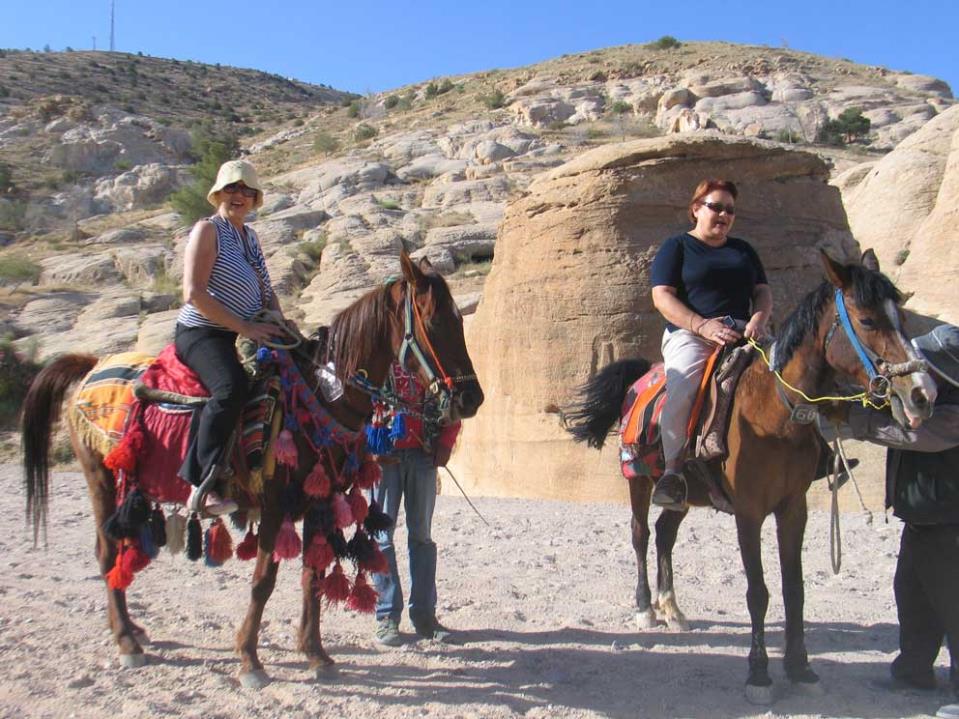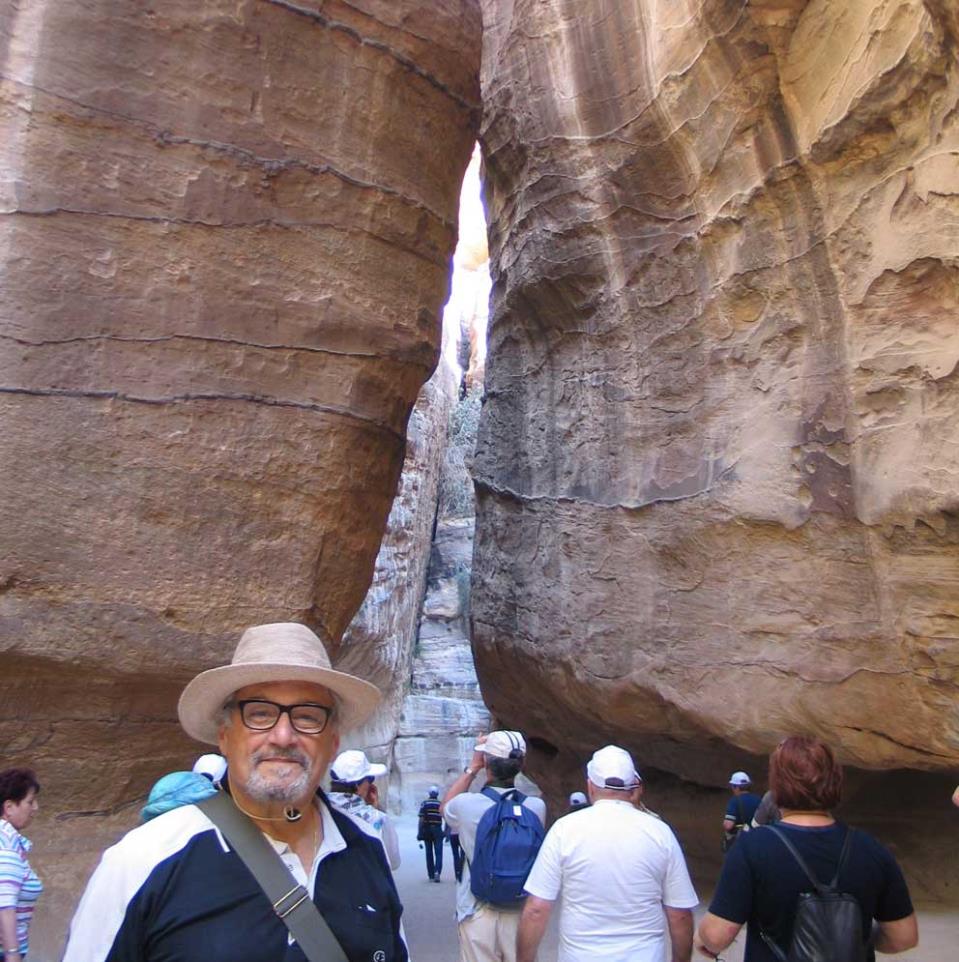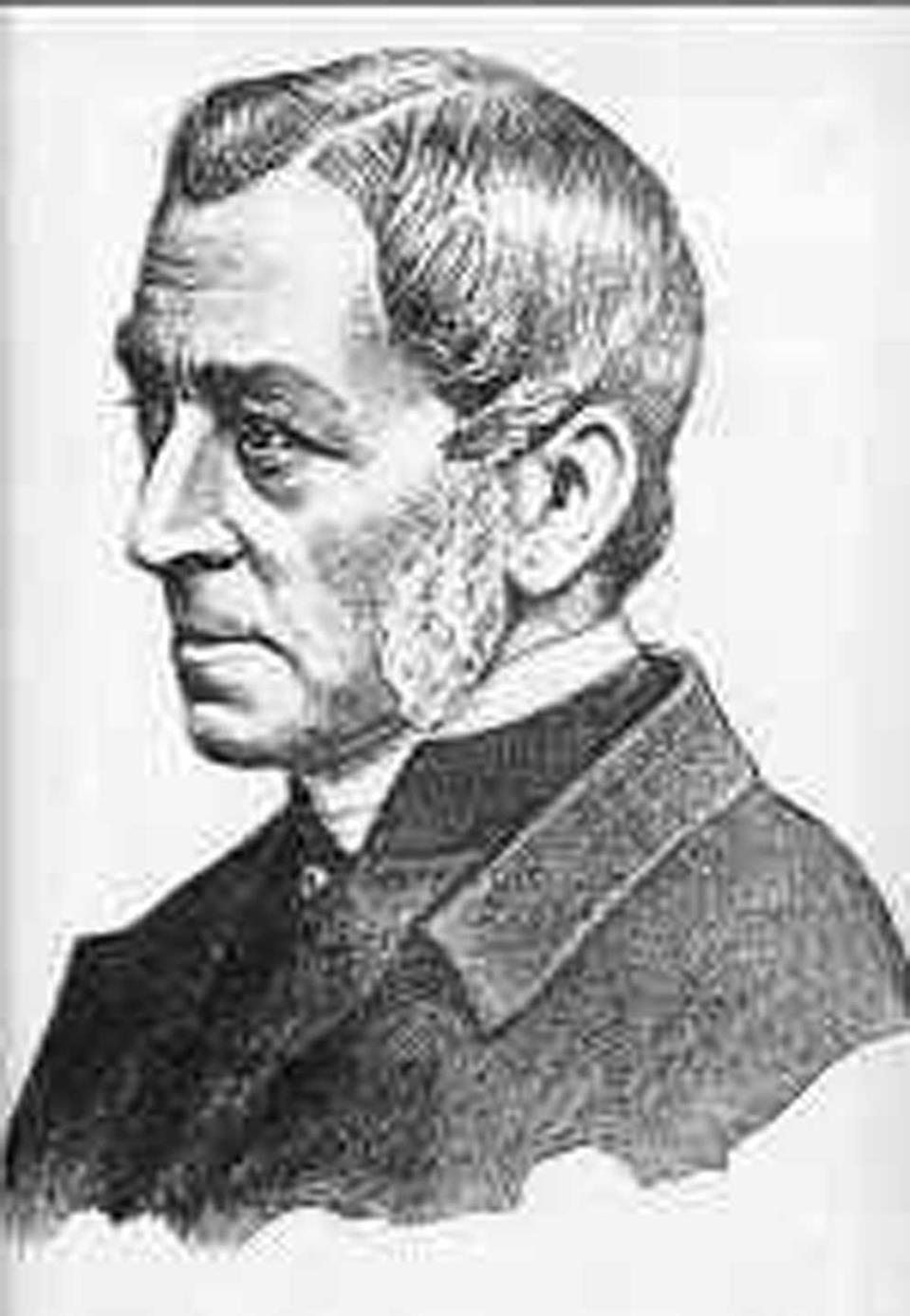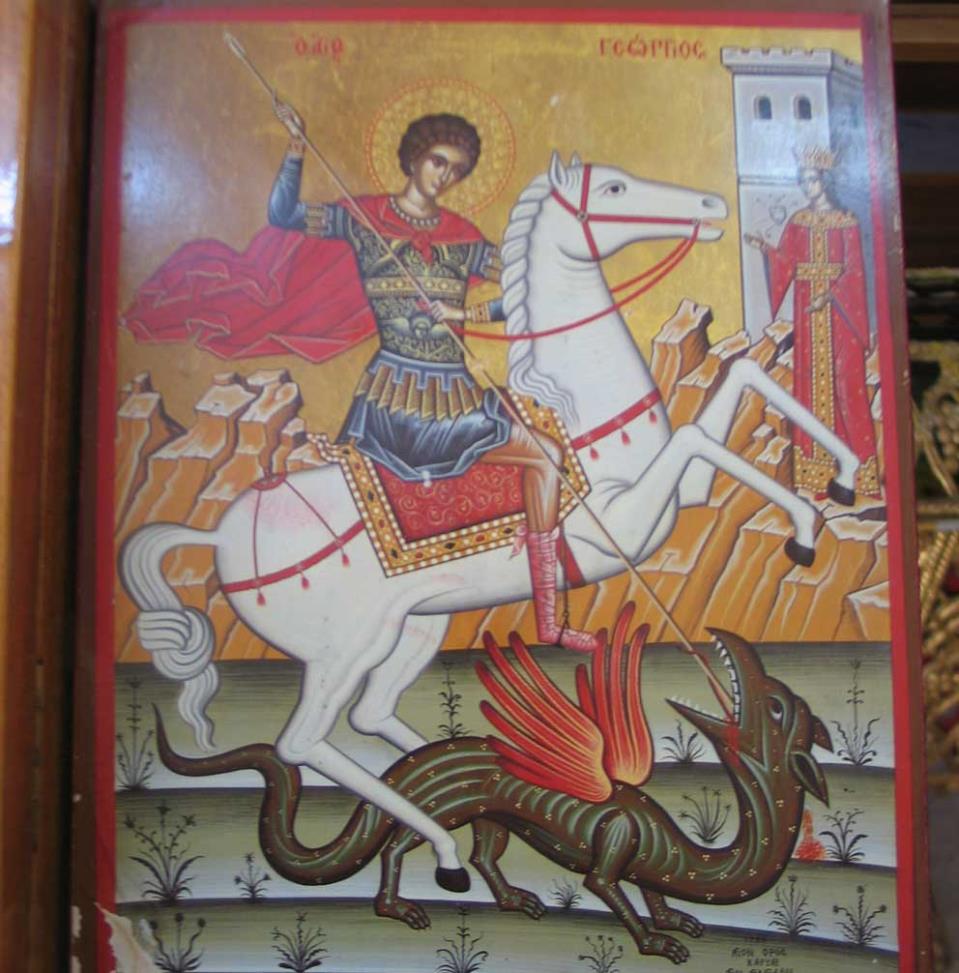Petra
Petra is not part of the Holy Land. But it was part of our tour. And it was very interesting to visit.
In the morning of Friday 2 May, we left for the city of Nabateja, in Petra, which existed during classical antiquity.

Petra [in Arabic the letter 'p' does not exist. In the name 'Petra' the original 'b' in 'Batra' has been transformed into a Latin 'p'] could have possibly been established as early as 312 BC as the capital city of the Nabataeans. It became part of the Roman Empire in AD 106. It was a wealthy trading town, for the incense route based on the production of both myrrh and frankincense in southern Arabia which ran through Mada'in Saleh to Petra. Today it is historically and archaeologically famous for its rock-cut architecture.
We started walking down the Siq - Arabic for 'gorge'. People who found it difficult to walk the long stretch down could hire a carriage [a horse-drawn cab-like, two wheeled cart with a covered seat for the 'horseman' and two guests] for Euro 25. Some of us made use of this service. The rest paced, over the rough pebbled dusty surface of the first part of the way, into the canyon-like gorge, with sky high red and dark grey coloured rock on both sides.
It was relatively still early in the morning, and we could enjoy the shade, dwarfed down below. Otherwise, except for some tracts which were paved with now slippery large marble blocks, the route was smoothly surfaced and kept clean, even from camels', horses', and donkeys' excrement, by cleaners who were stationed at certain posts, and did their job well. The passage was quite wide; at places enough for two carriages to pass side by side on their way up and down, in opposite directions. However, there were spots where no one dares keep walking and at the same time allow a carriage to pass running fast by.
All the way to the main attraction of this once hidden city, is down, down, always down. However, it was not tiring at all to walk all along the 45 minutes it takes to find yourself there, until you finally reach the main monument - the Treasure of Pharaoh Khazna (Maltese Ħażna) - when you are awed and stupefied by wonder, great great wonder!
Whenever I saw pictures and photos of this marvellous architecture sculptured in pink rock I used to believe it was the façade of a church, or of a temple for that matter. Our guide cleared this impression, though providing more questions ... it might be the façade of a royal tomb the remains of which have, by time, been cleared by people who later on made it their abode. Two sentry men in traditional Jordanian uniform stood by the side of the façade with people having photos by their side.

The spacious sandy grounds in front of this temple-like marvel was full of tourists coming from different countries. There were several Jordanian men, and women, and boys, and even girls praying to have their donkeys or very colourfully 'dressed' camels hired for a ride, for few Euros. There were also others who sold Petra souvenirs.
All of the group spent some time in the shade, in this place, taking photos and, at the same time, listening to the information our Jordanian guide was giving us, in very good English.
Beside this place - which is of course the main attraction and selling site for tourism in all the city - we walked further down and could appreciate more of the architectural sculptures on the sides of the particular rock that constitutes the gorge's century old nature's spectacle.
We also walked up a small hill over which are the mosaic floor and remains of a Byzantine Monastery on the right hand side of the front of which, a particularly interesting baptistery of the period is well preserved.
All along the way down / up this city, local young sunburnt dark skinned boys and girls try to sell tin silver-like bracelets, folding postcards, pieces of Petra stone, and even 'old Roman coins', the majority of which - if not all of them - I believe were false.
We also saw the remains of a Royal Tombs, the Theatre, and the Colonnaded Street.

PETRA is also known as the Rose City due to the colour of the stone out of which it is carved. The site remained unknown to the Western world until 1812, when it was introduced by Swiss explorer Johann Ludwig Burckhardt.
It was described as 'a rose-red city half as old as time' in the Newdigate Prize-winning poem [370 lines long, in rhymed couplets] by John William Burgon:

Petra
It seems no work of Man's creative hand,
by labour wrought as wavering fancy planned;
But from the rock as if by magic grown,
eternal, silent, beautiful, alone!
Not virgin-white like that old Doric shrine,
where erst Athena held her rites divine;
Not saintly-grey, like many a minster fane,
that crowns the hill and consecrates the plain;
But rose-red as if the blush of dawn,
that first beheld them were not yet withdrawn;
The hues of youth upon a brow of woe,
which Man deemed old two thousand years ago,
match me such marvel save in Eastern clime,
a rose-red city half as old as time.
UNESCO has described Petra as one of the most precious cultural properties of man's cultural heritage and included it as a UNESCO World Heritage Site in 1985. It was chosen by the Smithsonian Magazine as one of the 28 places to see before you die.
Old map of the Holy Land
Passing through the Wadi Mousa Desert [the Desert of the Valley of Moses], from Petra the coach took us to Madaba [principal city in the south of Jordan], where we stopped near the 'Madaba Visitors Centre'. From here, we walked streets - passing by shops selling souvenirs, and clothes, shawls, hats, carpets, and ... fruits - and entered St George's church also called Church of the Map. It is a Greek Orthodox Church built in 1896 over the remains of a Byzantine church from mid-sixth century A.D., dedicated to St George.
The modern Arab village of Madeba is built on the ruins of biblical Medeba. However, the main and most important attraction in the church of St George is the unique, oldest mosaic pavement which contains a geographical map of approximately 150 sites from the Holy Land, dating back to at least the sixth century A.D., discovered during the construction of the church. This map was originally part of the floor of a Byzantine church, built during the reign of Emperor Justinian, A.D. 527- 565. It is the oldest extant map of the Holy Land, made up of about two million pieces of coloured stone. It depicts hills and valleys, villages and towns in Palestine and the Nile Delta. Five other Byzantine churches have been discovered in Madaba, all with beautiful mosaics. Most of the labels on the map are in Cisjordan [modern Israel], and are associated with Biblical places, regional names, and events. Among these, the map marks Jericho with palm trees, 12 stones at Gilgal, Jacob's well in Shechem, tribal allotments, the Oak of Mamre at Hebron, John's baptism of Jesus in the Jordan River, Benjamin, Judah, and Bethlehem.

The walls of this church are covered with paintings and mosaic portraying scenes from the life of Christ, and other religious stories.
Prominent in the church are at least three paintings of St George.
Lost taking photos of the tapestries, I lost the group, and was on the verge of feeling having been left behind. The group had followed the guide and found a seat in a hall where he started explaining the interesting particular sites depicted in mosaic in the map we had just seen.
All photos reproduced herein - except that of poet Burgon - were taken by the author
© Joe Zammit Ciantar
[email protected]
Part 1
Part 2